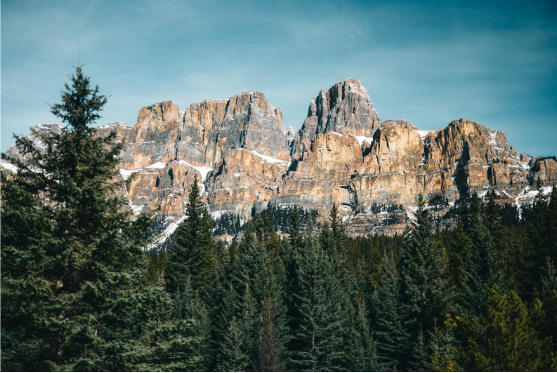How to Plan the Perfect Canadian Rockies Adventure
The Canadian Rockies cover a vast amount of land, stretching far and wide over about 1,000 kilometers across Alberta and British Columbia. The journey is worth it as they offer you one of the most iconic mountain landscape experiences in the world.
You get to enjoy the jagged peaks, the glacial lakes, alpine trails, and breathtaking wildlife encounters. No wonder they’re a UNESCO World Heritage Site! Planning a successful adventure that encapsulates everything in one trip may be hard, but this guide attempts to do that without leaving anything out.
The Timing Should be Perfect
Are you hoping to explore the best of the wilderness in the Rockies? If you want Instagram worthy photos and landscapes like the ones you’ve been scrolling through in Pinterest, don’t forget to time it right.
The best time to explore the Rockies depends entirely on the kind of activities you have planned. Summer falls around June to early September and hosts an ideal climate for hiking, viewing wildlife, and scenic drives. This is because most of the snow would have melted away from the trails and the roads. You can expect daytime temperatures between 15°C and 25°C.
If you’re planning a late spring trip, around May, you might still witness snowpack on higher elevations. Some of the trails might be shut off and you would need to skip them.
Fall, expected mid-September to early October, is ideal if you want to avoid the crowds. Although it has shorter daylight hours and a much higher risk of early snowfall, it’s still quite worth it if you want to enjoy the landscapes in solitude.
For skiing and ice-climbing enthusiasts, the months between November and April are the best choice!
Routes, Parks, and Attractions
The Canadian Rockies are home to five major national parks including Banff, Jasper, Yogo, Kootenay, and Waterton Lakes. The most visited out of all those are Banff and Jasper and they’re connected by the Icefields Parkway (Highway 93) which is a scenic road that stretches for 232-kilometers and provides access to many iconic landmarks.
Banff is Canada’s oldest park and it features Lake Louise, Moraine Lake, the Banff Gondola, and the Fairmont Banff Springs Hotel. On the other hand, Jasper National Park is the largest, giving you access to less crowded wilderness, the Columbia Icefield, Maligne Canyon, and the SkyTram.
We will suggest you plan depending on the difficulty level of the hikes, the activities you want to enjoy (hiking, kayaking, climbing, or wildlife photography), and how you want to get there. A great option is to reserve shuttle services to Moraine and Lake Louise if you are planning a trip during peak season due to private vehicle restrictions.
Permits, Passes, and Reservations
All those who visit the national parks are required to purchase a Parks Canada Discovery Pass (daily or annual). You might also require additional permits for specific backcountry trips including overnight hikes and camping adventures. You can book these through the Parks Canada reservation system.
Reservations, at least if you’re looking at high-demand areas, open up in January to March for backcountry camping grounds. Regardless of when you’re visiting, it is a great idea to book hotels, campgrounds, and even shuttles at least 3-6 months in advance.
Gear and Safety Required
The Canadian Rockies shouldn’t be trusted for the weather. Conditions can change dramatically even during the summer. Stay prepared and bring all the gear you will need. Here’s a short list of items you might not have considered yet;
Topographic maps (GPS with offline capabilities preferred)
Bear spray (if you’re planning to visit backcountry areas or hike on trails)
Multiple layers for temperatures from 5°C to 25°C
Microspikes or crampons if you’re visiting high-altitude snowfields
Water purification tablets or filters for longer trails
It is up to you to keep yourself as well as your family safe in the wilderness. Grizzly and black bears are common on most hiking trails so remember to travel in groups, make noise, and avoid any surprise encounters.
Pro Tip: If you don’t plan on bringing your own car to Canada, opt for guided Canadian Rockies tours which can create experiences for you instead of you having to find everything on your own.
Final Thoughts
If you plan well and start creating the itinerary or choose a guide ahead of time, there’s no reason your trip to the Rockies shouldn’t go as planned. In fact, we promise you it’s going to be a holiday to remember!
So, pack well, plan well, and don’t forget to grab that bear spray once in a while and steer off the traditional trails for exciting adventures.
